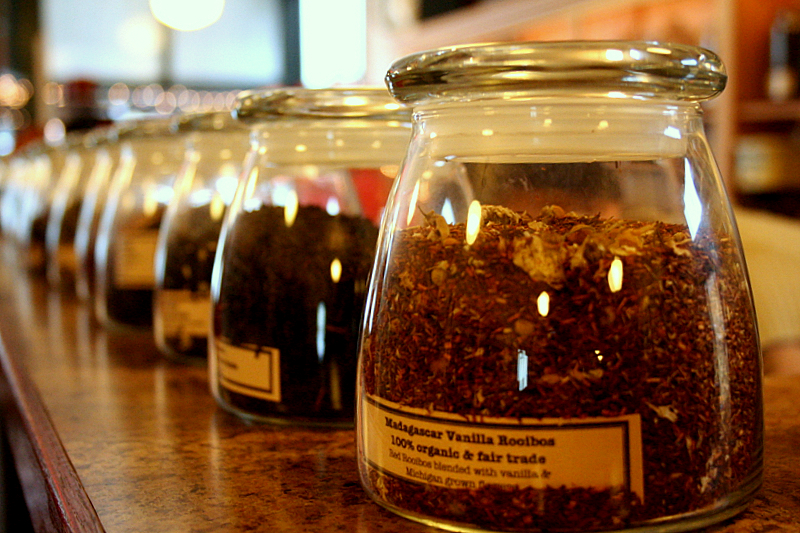As consumer preferences evolve toward health-conscious and lifestyle-oriented choices, changes are afoot in the global beverage market – and particularly the herbal tea segment. Notably, in this segment, rooibos is seeing a shift, as it gains ground in an ongoing rise to prominence within the herbal tea and tisane segment.
To provide tea brands and bulk herbal tea buyers with an understanding of these movements and the trends that are influencing them, this article profiles the various products that compete for consumer attention in the global herbal tea market.
In this highly active space, consumer trends and interest influence the rise and fall of herbal teas and tisanes – and of all these factors, a strong general trend toward health and wellness is the strongest driver. It is this trend that has seen the herbal tea segment gaining ground against black tea – and among products that are not derived from Camellia sinsensis, rooibos has shown significant and sustained penetration of the market as it becomes better-known across the globe.
The Global Herbal Tea Market – A World of Flavours and Benefits
The global herbal tea and tisane market has experienced substantial growth in the last decade, particularly since around 2015, and this trend has accelerated in recent years, especially with increased consumer focus on health and wellness, and a shift towards natural and organic options. The COVID-19 pandemic further boosted this demand, as consumers sought beverages that could support immunity, stress reduction, and overall well-being.
A recent market research report projects continued significant growth for this segment of the global tea market in the coming years (e.g., a CAGR of 5.6% from 2023 to 2032). This sustained growth is driven by ongoing consumer trends centred on healthy living, the search for functional benefits, and an increase in disposable incomes in emerging economies. Asia Pacific currently dominates the market, with North America expected to be the fastest-growing region, reflecting a global trend towards healthier lifestyles.
Across these markets, one demographic in particular – of younger consumers consisting of Gen Z and millennials who have less sentimental or cultural associations with traditional black tea whilst actively seeking out novel and functionally beneficial beverages – is a strong driver of the uptick in interest and volume for herbal teas.
In response to these shifts in consumer preferences, beverage companies and wholesale tea buyers are increasingly paying attention to the functional benefits offered by herbal teas, which offer a competitive advantage in a fiercely contested market space. These include anti-inflammatory, antioxidant, digestive, calming, and immune-boosting qualities. Adding to the impetus behind interest in herbal teas and tisanes, the market is also seeing a surge in demand for innovative flavors and blends, with a strong emphasis on clean-label and sustainably sourced products. The convenience of tea bags remains popular, while loose-leaf options are also gaining traction among consumers seeking a more traditional and potentially higher-quality experience.
To provide you a snapshot of the most popular herbal teas and tisanes globally, below we profile the five top products competing for attention in this space, and provide current market and growth data, along with comparative information and reasons for their growing popularity.
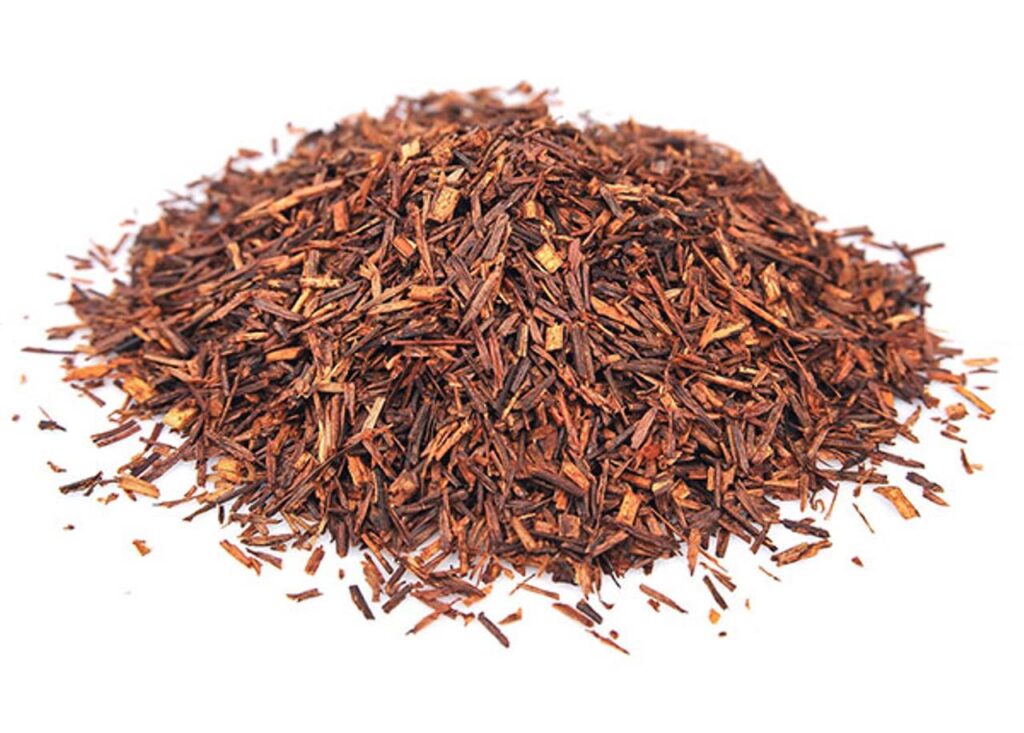
- Rooibos Tea
Hailing from South Africa – the only region of the world in which it is grown – rooibos is a naturally caffeine-free herbal tisane rich in antioxidants. Its distinctive sweet and earthy flavor – and its ease of preparation which requires no deviation from the standard method of preparing a cup of black tea – make it a popular alternative to traditional black tea. It’s often consumed for its potential to support overall health, including a growing list of benefits for skin and bone health, and its naturally sweet profile reduces the need for added sugar.
- Estimated Production/Sales Volume (2024): ~15,000–20,000 tons
- Market Value (2024): ~$1.63 billion
- Description: Rooibos tea, a caffeine-free herbal tea from the Aspalathus linearis plant native to South Africa’s Cederberg region, is known for its sweet, nutty flavor and antioxidant properties (e.g., aspalathin, nothofagin). Its market was valued at $1.63 billion in 2024, with strong growth in North America, Europe, and Asia for its health benefits, including stress relief, immune support, and anti-inflammatory properties.
Market Growth:
- Recent Growth: The rooibos tea market grew from $1.50 billion in 2023 to $1.63 billion in 2024, driven by health and wellness trends. Consumer awareness of its antioxidant and caffeine-free properties has fuelled demand, particularly in North America and Europe.
- Forecast Growth: Projected to grow at a CAGR of between 5.7% to 6.7% from 2025 to 2032, reaching $2.16–$2.50 billion by 2032. Asia-Pacific, particularly India and China, is one of the fastest-growing regions due to rising herbal tea popularity.
Key Market Drivers:
- Rising demand for caffeine-free, antioxidant-rich beverages aligning with health and wellness trends.
- Growth in organic and sustainable products, as rooibos is often produced using ethical farming practices.
- Product innovation, including flavoured blends (e.g., citrus, berry) and RTD formats, expanding consumer appeal.
- Expansion of e-commerce and direct-to-consumer channels, improving global accessibility.
Production and Sales:
- Production: Exclusively grown in South Africa’s Western Cape, rooibos production is estimated at 15,000–20,000 tons annually, with South Africa exporting to over 60 countries, including the U.S., Germany, and Japan.
- Sales: Bagged rooibos holds a 48.5% market share, with boxed packaging preferred (56.4%). Business-to-consumer (B2C) channels, including supermarkets and online retail, account for 52.3% of distribution.
Challenges:
- Limited Production Area: Rooibos only grows in South Africa’s Cederberg region, making it vulnerable to climate change, droughts, and pests, which cause supply constraints and price volatility.
- Competition: Competes with established herbal teas like chamomile, peppermint, and green tea, which have broader consumer recognition.
- Limited Awareness: In emerging markets like Asia-Pacific, rooibos is less known, slowing market penetration, but is experiencing an uptick in awareness related to its functional benefits.
Opportunities:
- Product Innovation: Flavoured rooibos blends (e.g., citrus, vanilla, berry) and RTD products are gaining traction, appealing to diverse consumer tastes.
- Organic and Sustainable Products: Demand for organic rooibos is rising, with brands emphasising Rainforest Alliance and regenerative certifications.
- E-commerce Growth: Online retail and direct-to-consumer channels are expanding rooibos’ global reach, with platforms like Amazon and specialty stores driving sales
- Health Research: Investments in research (e.g., ZAR 4.8 million for rooibos studies on chronic diseases) enhance its therapeutic profile, boosting consumer interest.
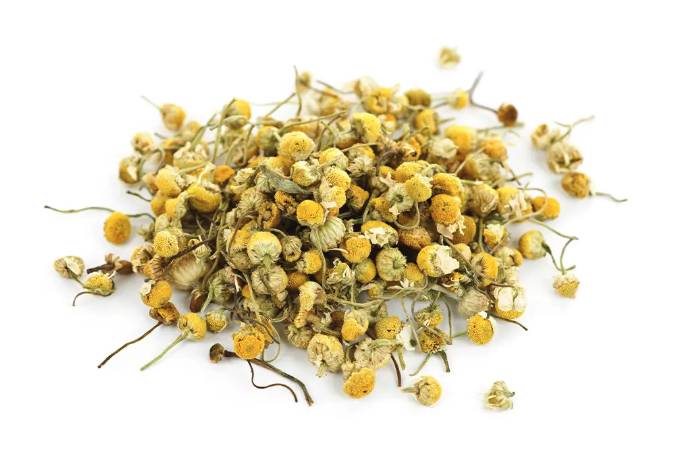
- Chamomile Tea
Widely recognised for its calming and sleep-inducing properties, chamomile tea is a perennial favourite. Its mild, apple-like scent and ability to help with anxiety, indigestion, and improving sleep quality make it highly attractive to consumers seeking natural remedies for stress and relaxation.
- Estimated Production/Sales Volume (2024): ~15,000–20,000 tons
- Market Value (2024): ~$1.2–1.5 billion (estimated, ~28–35% of herbal tea market)
- Description: Chamomile tea is derived from the dried flowers of Matricaria chamomilla or Chamaemelum nobile, and is one of the most popular herbal teas globally, prized for its calming, anti-inflammatory, and digestive properties. It holds a significant share of the herbal tea market, particularly in North America and Europe, where it’s valued for stress relief and sleep support.
Market Growth:
- Recent Growth: Chamomile tea sales have surged due to its perceived benefits for stress relief and sleep, with single-herb chamomile teas gaining popularity for their simplicity and transparency.
- Forecast Growth: Expected to grow at a CAGR of between 5% and 7% through 2032, in line with the broader herbal tea market, driven by cognitive health trends (chamomile’s calming effects create an alert yet relaxed state). North America is projected to see the fastest growth due to obesity concerns and demand for natural remedies.
Production and Sales:
- Production: Major producers include Egypt, Germany, Poland, and Argentina, with Egypt leading due to its ideal climate and large-scale cultivation. Annual global production is estimated at 50,000–60,000 tons, based on chamomile’s dominance in the herbal tea market and its use in blends.
- Sales: Chamomile dominates retail channels, particularly supermarkets, hypermarkets, and online platforms, with tea bags being the preferred format (dominant in 2024 with a significant market share). Sales are strong in the U.S., Canada, and Germany, where health-conscious consumers drive demand. Brands like Celestial Seasonings and Bigelow Tea lead in North America.
Key Market Drivers:
- Increasing consumer focus on mental wellness and natural remedies for stress and insomnia.
- Wide availability in tea bags and loose-leaf formats through supermarkets and online retail.
- Innovation in chamomile blends with other herbs (e.g., lavender, lemon), appealing to diverse tastes.
Challenges:
- Regulatory Hurdles: Strict regulations on health claims in the EU (e.g., EU Novel Food Regulation) and U.S. (FDA labelling requirements) require extensive documentation, increasing compliance costs. Misleading claims about chamomile’s benefits can lead to legal issues or product recalls.
- Supply Variability: Seasonal fluctuations in chamomile flower yields due to climate change and weather patterns (e.g., droughts in Egypt) affect supply consistency and pricing.
- Competition: Faces competition from other calming teas like peppermint and lavender, which may appeal to consumers seeking similar benefits.
Opportunities:
- Functional Blends: Growing demand for functional teas with added nutrients or adaptogens (e.g., chamomile with ashwagandha) targets specific wellness needs like mental health and immunity.
- Sustainable Packaging: Eco-friendly packaging and ethically sourced chamomile appeal to environmentally conscious consumers, especially in Europe.
- E-commerce Expansion: Online retail platforms are increasing accessibility, with direct-to-consumer brands like VAHDAM India and Organic India leveraging digital channels.
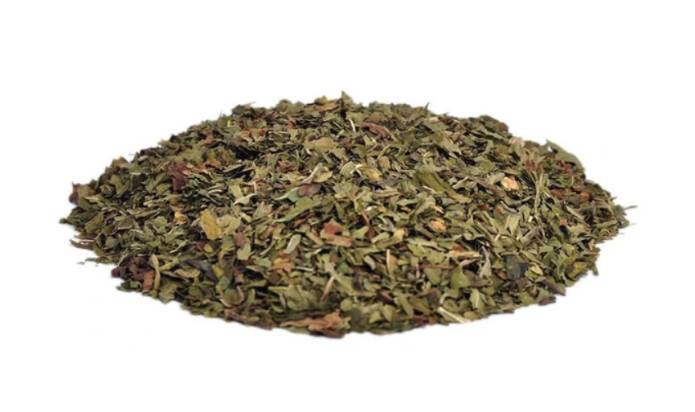
- Peppermint Tea
Primarily celebrated for its digestive benefits, peppermint tea is a go-to for soothing stomach upset, nausea, and symptoms of irritable bowel syndrome (IBS). Beyond digestion, its refreshing taste and reported antioxidant, anticancer, antibacterial, and antiviral properties contribute to its strong appeal.
- Estimated Production/Sales Volume (2024): ~10,000–15,000 tons
- Market Value (2024): ~$0.9–1.1 billion (estimated, ~20–25% of herbal tea market)
- Explanation: Peppermint tea, made from Mentha piperita leaves, is valued for its refreshing, minty flavor and digestive health benefits, including relief from bloating and irritable bowel syndrome. It’s a staple in the herbal tea market, particularly in Western markets, but less dominant than chamomile or rooibos due to its specific flavour profile. It is popular in North America, Europe, and the Middle East, often consumed hot or cold.
Market Growth:
- Recent Growth: Peppermint tea has benefited from the herbal tea market’s growth, with a focus on gut and digestive health driving demand (this segment dominated the market in 2023).
- Forecast Growth: The peppermint tea market is projected to grow at between 5.6% and 6.34% through 2032, with strong growth in North America and Asia-Pacific due to rising interest in functional beverages. In this market the tea bag segment – heavily featuring peppermint – is expected to be the fastest-growing form.
Key Market Drivers:
- Growing demand for functional beverages addressing gut and digestive health.
- Popularity in both hot and iced tea formats, appealing to diverse consumer preferences.
- Expansion of organic and clean-label products, aligning with consumer demand for natural ingredients.
Production and Sales:
- Production: Key producers include the U.S. (e.g., Washington, Oregon), Morocco, and Egypt. Peppermint’s widespread cultivation and use in single-herb and blended teas contribute to its high volume.
- Sales: Peppermint tea is a staple in supermarkets, specialty stores, and cafes, with tea bags dominating due to convenience. Brands like Twinings and Yogi Tea hold significant market shares in Western markets. Sales are boosted by its use in iced tea and RTD formats, particularly in the U.S.
Challenges:
- High Costs: Peppermint tea’s premium pricing, driven by organic certifications and high-quality leaves, limits appeal in price-sensitive markets like developing countries.
- Seasonal Variability: Climate fluctuations affect peppermint yields, particularly in regions like Morocco, leading to supply chain disruptions.
- Market Saturation: Intense competition from other digestive health teas (e.g., ginger, fennel) and functional beverages challenges market share growth.
Opportunities:
- RTD and Iced Teas: Expanding peppermint tea into ready-to-drink (RTD) and iced tea formats targets younger consumers seeking convenient, refreshing beverages.
- Organic and Clean-Label Trends: Demand for organic peppermint tea is rising, with brands like Traditional Medicinals emphasising sustainable sourcing.
- Innovation in Blends: Combining peppermint with trending ingredients like turmeric or probiotics creates new functional tea products for wellness-focused consumers.
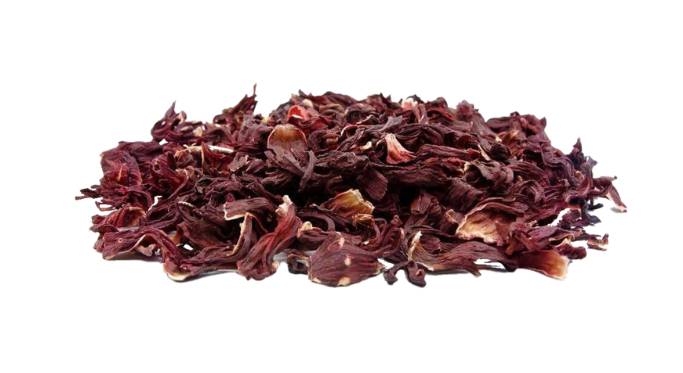
- Hibiscus Tea
Known for its vibrant red colour and tart, floral flavour, hibiscus tea is gaining attention for its potential health benefits, including supporting heart health and blood pressure regulation. Its unique taste profile and perceived wellness advantages make it an appealing option for those seeking both flavour and function.
- Estimated Production/Sales Volume (2024): ~8,000–12,000 tons
- Market Value (2024): ~$0.5–0.7 billion (estimated, part of herbal tea market)
- Explanation: Hibiscus tea, made from the calyces of Hibiscus sabdariffa, is known for its tart, cranberry-like flavor and potential benefits for blood pressure, heart health, and weight management. It’s popular in North America, Africa, and parts of Asia but has a smaller market share than chamomile or rooibos.
- Description: It is popular in North America, Africa, and Asia, often consumed as a hot or iced beverage.
Market Growth:
- Recent Growth: Hibiscus tea has grown with the herbal tea market, benefiting from its cardiovascular health benefits and vibrant flavour.
- Forecast Growth: The rate of the hibiscus tea market ‘s growth is variously reported as being between 7.5% to 8.3% CAGR, with North America and Africa showing strong potential due to health trends and cultural preferences (e.g., hibiscus as “zobo” in Nigeria).
Key Market Drivers:
- Health benefits, including cardiovascular support and antioxidant properties, driving demand among health-conscious consumers.
- Increasing use in flavored blends and RTD products, appealing to younger demographics.
- Growth in premium and organic hibiscus teas, particularly in specialty retail.
Production and Sales:
- Production: Major producers include Nigeria, Sudan, Mexico, and Thailand, with an estimated global production of 15,000–20,000 tons. Hibiscus is widely cultivated in tropical regions, supporting its use in both single-herb and blended teas.
- Sales: Hibiscus tea is sold primarily through supermarkets, online retail, and cafes, with tea bags and loose-leaf formats both popular. Brands like Tazo and Harney & Sons offer premium hibiscus blends. Sales are strong in the U.S. and Nigeria, where the Nigeria herbal tea market was valued at $7.75 million in 2024.
Challenges:
- Price Sensitivity: Hibiscus tea’s higher cost compared to traditional teas limits adoption in price-sensitive markets, particularly in developing regions.
- Supply Chain Issues: Climate change and geopolitical instability in key producing countries (e.g., Sudan) disrupt hibiscus supply, affecting pricing and availability.
- Niche Appeal: Its tart flavour may not appeal to all consumers, limiting mainstream adoption compared to chamomile or peppermint.
Opportunities:
- Functional Beverages: Hibiscus’s heart health benefits make it ideal for functional teas with added ingredients like ginger or probiotics, targeting wellness consumers.
- RTD Market: Expanding hibiscus into iced teas and RTD formats, as seen with brands like VAHDAM India, appeals to younger demographics.
- Cultural Marketing: Leveraging hibiscus’s cultural significance (e.g., in African and Latin American cuisines) can boost demand in diaspora communities.
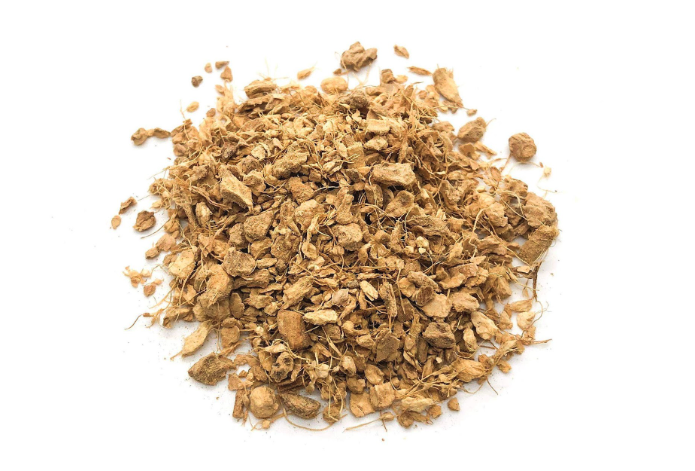
5. Ginger Tea
Ginger has a long history of use in traditional medicine for its warming and anti-nausea effects. As a tea, it’s popular for easing digestive issues, alleviating cold and flu symptoms, and reducing pain, including menstrual discomfort, making it a versatile and sought-after beverage.
- Estimated Production/Sales Volume (2024): ~10,000–15,000 tons
- Market Value (2024): ~$0.5–0.7 billion (estimated, ~12–16% of herbal tea market)
- Description: Ginger tea, made from Zingiber officinale rhizomes, is renowned for its spicy flavor and benefits for digestion, immunity, and nausea relief. It is widely consumed in Asia-Pacific, North America, and Europe, often blended with lemon or honey.
Market Growth:
- Recent Growth: Ginger tea has seen strong growth due to its digestive and immune-boosting properties, with the herbal tea market growing from $3.70 billion in 2023 to $4.34 billion in 2024.
- Forecast Growth: Projected to grow at a CAGR of between 6.5% and 8.3% through 2032, with Asia-Pacific leading due to cultural traditions and North America growing rapidly due to wellness trends.
Key Market Drivers:
- Growing health consciousness means consumers are seeking natural remedies for wellness benefits.
- Naturally sweet and spicy, ginger tea offers a healthy alternative to sugary drinks.
- Manufacturers are introducing new combinations (e.g., ginger-lemon, ginger-turmeric) and convenient pre-brewed formats, broadening ginger tea’s appeal and accessibility.
Production and Sales:
- Production: Major producers include India, China, Nigeria, and Indonesia, with an estimated global production of 10,000–15,000 tons. Ginger’s widespread cultivation supports its use in herbal teas and blends.
- Sales: Ginger tea is popular in supermarkets, online retail, and wellness centers, with tea bags dominating due to convenience. Brands like Yogi and Dilmah offer ginger-heavy blends. The ginger category dominated the herbal tea market in 2023.
Challenges:
- Raw Material Costs: Fluctuating ginger prices due to weather conditions and labor costs in producing countries increase production costs.
- Regulatory Constraints: Health claim regulations (e.g., FDA, EFSA) limit marketing of ginger’s benefits, requiring costly compliance efforts.
- Flavor Barriers: Ginger’s spicy profile may deter some consumers, necessitating blends to broaden appeal.
Opportunities:
- Immunity-Focused Products: Ginger’s immune-boosting properties align with post-COVID health trends, supporting functional tea development.
- Sustainable Sourcing: Emphasising organic and fair trade ginger appeals to ethical consumers, as seen with brands like Organic India.
- Innovative Blends: Combining ginger with trending herbs flavours like turmeric or lemongrass creates new products for diverse consumer preferences.
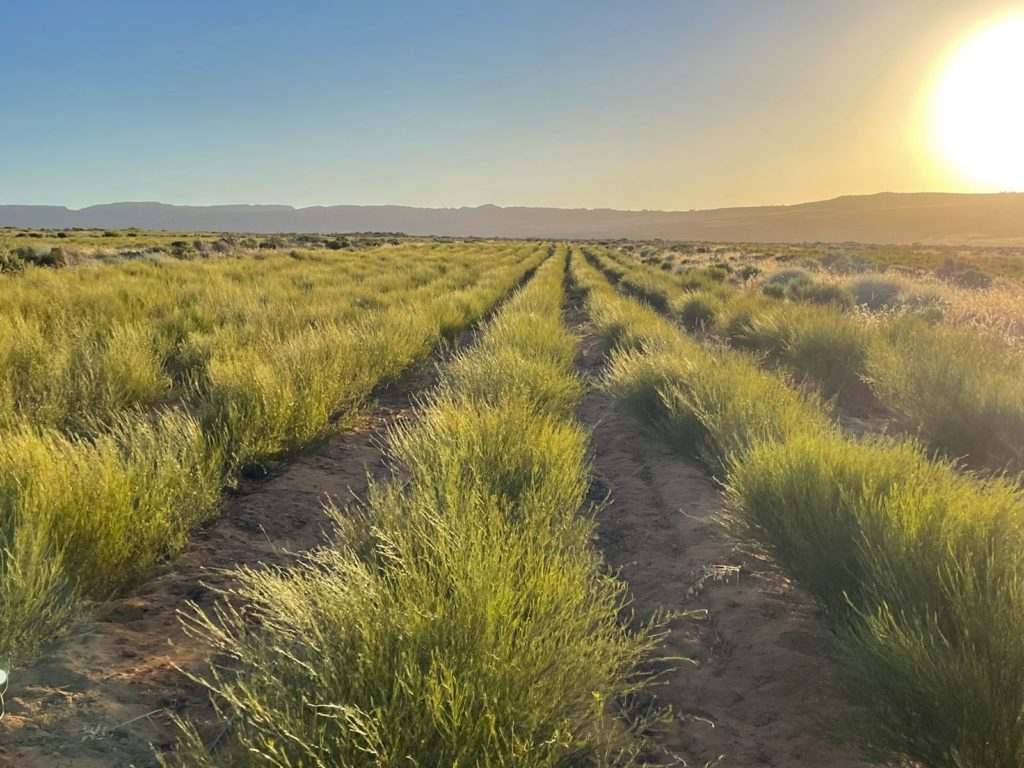
A Bright Outlook For Herbal Infusions – Including Rooibos
In terms of market trends as a whole, the global tea market (including herbal teas) was valued at $57.08 billion in 2024, with a projected CAGR of 1.88% through 2035. Signifying a strong uptick in consumer preference, this is a significant marker of fluctuations in this market, with herbal teas and tisanes outpacing traditional black teas in growth rate due to health and wellness trends, with a focus on gut health, cognitive health, and immunity.
And, whilst tea bags and conventional products continue to dominate, loose-leaf and organic segments are showing rapid and sustained growth as consumers increasingly seek out beverages which are ethically produced, have a clear source of origin, and are able to demonstrate sustainability credentials.
Regionally, the Asia-Pacific holds the largest market share (dominant in 2024), driven by cultural traditions in China, India, and Japan. North America is the fastest-growing region due to health concerns/objectives and demand for functional beverages. Europe emphasises premium and organic teas, while Africa and the Middle East show niche growth for herbal teas, including rooibos, due to health-conscious consumer bases.
Supply constraints for rooibos – including a growing region limited to South Africa’s Cederberg region, which is subject to periodic droughts – and competition among herbal teas (e.g., chamomile, matcha) may impact growth, but conversely also drive innovation in building climate resilience into production at farm and field level.
Against this backdrop, a wide range of opportunities for premium tea and beverage brands continue to open up, with these including innovation in RTD and functional teas, expansion of e-commerce, and a growing emphasis on organic and sustainable products that are verified by globally-recognised certification bodies. Additionally, as consumers show heightened interest in the health-giving benefits of beverages in general, and herbal teas in particular, partnerships with wellness brands and investments in health research (e.g., rooibos studies) enhance market potential.
The global tea and herbal tea market is an ever-changing landscape, shaped by a range of environmental, economic and cultural factors, which tea brands and beverage producers remain alert to, and continue to respond to, in order to cater to consumer interest.
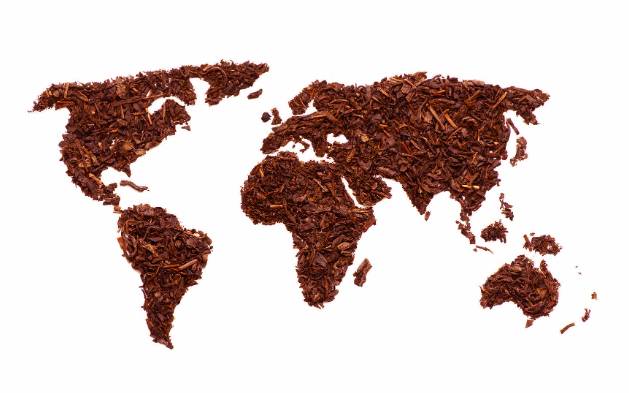
In conclusion, the global herbal tea market is undergoing a dynamic evolution driven by shifting consumer priorities, particularly around health, sustainability, and authenticity. While traditional tea products maintain a strong presence, the surge in demand for herbal, organic, and functional teas signals a decisive pivot toward wellness-oriented consumption.
Regional trends highlight the nuanced nature of this growth, with Asia-Pacific leading in volume, North America emerging as a hub for innovation, and Europe, Africa, and the Middle East contributing unique market drivers. Despite supply-side challenges – especially in the herbal segment – these pressures are spurring innovation in sustainable sourcing and product development. As a result, opportunities abound for brands that are agile, transparent, and aligned with evolving consumer values, particularly in the premium, organic, ethical, and ready-to-drink segments.
Looking ahead, those who invest in health research, strategic partnerships, and climate-resilient practices will be best positioned to thrive in this vibrant and expanding global market.
As further reading, we can suggest our Rooibos Marketplace article, and our series of Importers articles which detail the history and growth of rooibos in regional markets across the globe, including in Germany, the UK, Japan, and the Netherlands.

